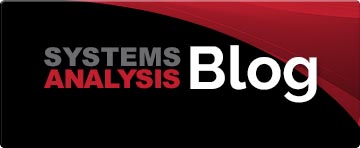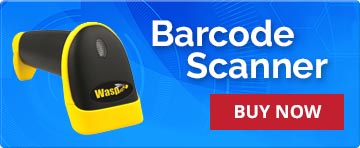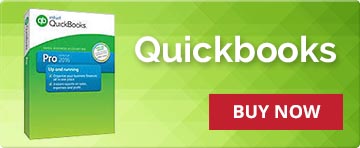Case Studies in QuickBooks Customization
 Claims Adjuster, Houston, TX: This customer used Microsoft Great Plains for many years. They decided to move over to QuickBooks because it was inexpensive to purchase, had less annual costs for software service plans, and training for new employees on its use was easier. A program was written years earlier to take insurance adjustments from the carrier’s mainframe, and transfer them as bills into Microsoft Great Plains SQL database. Without this customization, they would spend hours daily entering this information. Our company wrote a solution that reads the mainframe and then updates the bills in QuickBooks automatically. Further we found out payments were released according to another report, and then checks could be printed. We provided an easy link that reads the claims approved, and selects the checks to be paid. The customer paid $4500 for this program, but saved over $5000 in the first year over Great Plains annual charges and $9000 for every year thereafter. With Great Plains, these updates had to be copied, pasted, and tested on the new release because the changes were made to the Great Plains code. This could cost an additional $5,000 per year to bring over these changes and sometimes there were “bugs” where forms did not print. With QuickBooks, updates are made automatically by the customer using an easy upgrade program that Intuit has pioneered decades earlier. The custom programs for QuickBooks need only minor adjustments to their programs (you have to select the new Version for security purposes), and the programs could be changed ahead of time so there were never any errors when upgrading QuickBooks. The customer loves the QuickBooks reports. Also, getting financials is much easier than posting methods from within Great Plains.
Claims Adjuster, Houston, TX: This customer used Microsoft Great Plains for many years. They decided to move over to QuickBooks because it was inexpensive to purchase, had less annual costs for software service plans, and training for new employees on its use was easier. A program was written years earlier to take insurance adjustments from the carrier’s mainframe, and transfer them as bills into Microsoft Great Plains SQL database. Without this customization, they would spend hours daily entering this information. Our company wrote a solution that reads the mainframe and then updates the bills in QuickBooks automatically. Further we found out payments were released according to another report, and then checks could be printed. We provided an easy link that reads the claims approved, and selects the checks to be paid. The customer paid $4500 for this program, but saved over $5000 in the first year over Great Plains annual charges and $9000 for every year thereafter. With Great Plains, these updates had to be copied, pasted, and tested on the new release because the changes were made to the Great Plains code. This could cost an additional $5,000 per year to bring over these changes and sometimes there were “bugs” where forms did not print. With QuickBooks, updates are made automatically by the customer using an easy upgrade program that Intuit has pioneered decades earlier. The custom programs for QuickBooks need only minor adjustments to their programs (you have to select the new Version for security purposes), and the programs could be changed ahead of time so there were never any errors when upgrading QuickBooks. The customer loves the QuickBooks reports. Also, getting financials is much easier than posting methods from within Great Plains.
 Health Care Subscription Company, Boston, MA: This company had developed a custom access database to track their patients and notes. As part of this system, an update was written to create invoices for monthly invoices. Over time, they developed a method using QuickBooks and IIF files for invoice imports. There were over 10,000 invoices per month, and a failure of this update was common because IIF files are specifically formatted, and verify errors in batch, meaning any one error would cause all 10,000 invoices to fail. We wrote a system to read the Access Database, and update the invoices directly into QuickBooks, being able to create a log file for just the invoices in error; so they could be corrected and individually updated. Further, the customer was receiving payments from a Bank Lock Box, which means they received a daily report of deposits from the bank which had to be parsed and then entered as “Receive Payment from Customer”. Our company wrote the update to take a Bank of America file from a lockbox, and post the payment, with discounts automatically being calculated for various reasons, into QuickBooks. We also created a NACHA file for Bank of America to provide credit card information for auto-pay customers which we moved into QuickBooks customer file. Later, with the use of QuickBooks merchant services, these updates were not only easier, but the monthly charges were less.
Health Care Subscription Company, Boston, MA: This company had developed a custom access database to track their patients and notes. As part of this system, an update was written to create invoices for monthly invoices. Over time, they developed a method using QuickBooks and IIF files for invoice imports. There were over 10,000 invoices per month, and a failure of this update was common because IIF files are specifically formatted, and verify errors in batch, meaning any one error would cause all 10,000 invoices to fail. We wrote a system to read the Access Database, and update the invoices directly into QuickBooks, being able to create a log file for just the invoices in error; so they could be corrected and individually updated. Further, the customer was receiving payments from a Bank Lock Box, which means they received a daily report of deposits from the bank which had to be parsed and then entered as “Receive Payment from Customer”. Our company wrote the update to take a Bank of America file from a lockbox, and post the payment, with discounts automatically being calculated for various reasons, into QuickBooks. We also created a NACHA file for Bank of America to provide credit card information for auto-pay customers which we moved into QuickBooks customer file. Later, with the use of QuickBooks merchant services, these updates were not only easier, but the monthly charges were less.
 Freight Transportation Business, Milwaukee, WI:
Freight Transportation Business, Milwaukee, WI:
This Company received multiple tickets for charges incurred as part of transporting goods. The customer had a custom written system on IBM which had worked for decades.
The trucking deliveries were electronically received and imported into QuickBooks using our utilities, allowing for the use of QuickBooks in their business. Later we received payments from customers, which had to be analyzed due to various 1% discounts, to apply and paid in full balance for invoices. The EDI file received for deliveries was in a customized format the company had used for years.
 Real Estate Company, Boston, MA:
Real Estate Company, Boston, MA:
This Company had been using a custom real estate accounting system for decades. All the transactions, for each fund, had to be meticulously transferred into QuickBooks. Our company took ten years of data, in a similar way to having done Microsoft Great Plains, and updated each journal entry, paid invoice history, vendor bill history, and list information. Our process is described in a white paper entitled “Importing Transactions to QuickBooks”
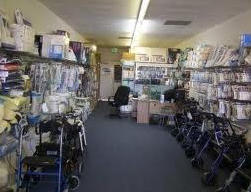 Medical Supply Company, Boston, MA: This Company was using a custom written Access program to receive sales orders, process invoices, and build a medical kit sold to American Red Cross. Further, each Red Cross Chapter could order product, but billings were to a “headquarters”.
Medical Supply Company, Boston, MA: This Company was using a custom written Access program to receive sales orders, process invoices, and build a medical kit sold to American Red Cross. Further, each Red Cross Chapter could order product, but billings were to a “headquarters”.
With Fishbowl Inventory, and QuickBooks, we transferred their lists, special pricing, and transactions into both Fishbowl and QuickBooks. Further, we had to receive web orders from Yahoo into Fishbowl, and CRM module for QuickBooks as the owner did most of the sales and estimates. We also provided all new servers, PC’s and infrastructure. We had to keep each component for their kits into lot numbers, and create new lot numbers for their new kits. Manufacturing was a simply kit assembly, but tracking these kits was essential.
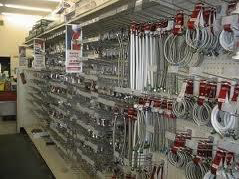 Plumbing Supply Company, Providence, RI: This Company was using a custom written accounting system from the 1980’s. QuickBooks was their second Accounting System ever used. We transferred 25,000+ items into QuickBooks, and well over 10,000 customers.
Plumbing Supply Company, Providence, RI: This Company was using a custom written accounting system from the 1980’s. QuickBooks was their second Accounting System ever used. We transferred 25,000+ items into QuickBooks, and well over 10,000 customers.
We set up the forms and front counter computers, and servers to meet this demand. Getting price updates by manufacturer was a big concern for the owner because he did all the price changes. Further, he received CD’s in the mail with price changes, and “pink” or “yellow” sheets that would be broken down by item category. We created a program to export the pricing file and enable the owner to make these changes months before the price changes were due. We created a percentage and group price change program, so 20 pricing levels could be updated at once for groups of items based upon a percentage increase. We could read the CD’s and update the file in a similar fashion. On the date of price change, the night before the owner would update QuickBooks and the price changes took effect.
 Contractor for laboratories, Woods Hole, MA:
Contractor for laboratories, Woods Hole, MA:
This customer owned QuickBooks and used it for time and billing. At the end of each month, she would create a billable invoice within QuickBooks, but then spend hours cutting and pasting the line items together because QuickBooks had separated the line items in the wrong way for her business.
We wrote a program that opens an invoice, allows her to use the UP and DOWN arrow to move line items, and then save the invoice back into QuickBooks. She now can edit her invoices in less than one hour.
 Leather Distributor, Nashua, NH:
Leather Distributor, Nashua, NH:
This Company specializes in high quality leather good for sale over the internet. Purchases are shipped from Italy so proper planning and ordering becomes essential. We created a sales analysis lookup, by item and customer, selecting several columns for dates, so that a final report with item, on hand, reorder point, sales analysis for up to 6 periods, and aggregate information could be easily viewed. This saved hours every day matching orders, and working through Excel to product the same results.
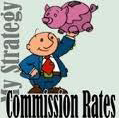 IT Technology Company, Boston, MA:
IT Technology Company, Boston, MA:
This Company migrated from Microsoft Great Plains to QuickBooks. The time it took entering each custom order, and purchase order into Great Plains averaged 20 minutes an order, especially because every item was “new” and had to be entered into Item file, pricing, and warehouse files as well.
With QuickBooks, all this information can be entered easily into QuickBooks, and list files updated to reflect these changes. The cost of each item however was critical because each salesperson was paid commission on profit of each order. An Excel spreadsheet was developed by dumping the QuickBooks report, sales rep detail, and then manually updating the last cost from QuickBooks. Soon it was learned the average cost was not very accurate for their purposes, and not every item was entered as “received” which contributed to the problem of costing, but not to the operation of the company because they never had any inventory. The purchase orders contain the customer name from each line item on the bills. By writing a custom program, that can read the bill line item information, the customer, and item they could be matched to the invoice based upon a variance with the invoice date. A custom field was added to QuickBooks for “Unit Cost”, and the cost was updated. A commission report could be generated “by profit” and costs were locked into each invoice to be viewed decades later.
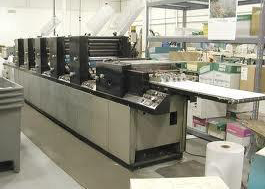 Label Printing Company, Newark, NJ:
Label Printing Company, Newark, NJ:
This company had developed a custom sales order which updated into legacy accounting system. Upgrading to QuickBooks was needed because their programmer was retiring who wrote their accounting system. We took the sales order package written by a company in Florida, running in Windows, and synced the customer and sales orders daily into QuickBooks so estimates could be done with the Print Master Software. The customer saved thousands because Microsoft Great Plains was the only other solution capable of doing this task.
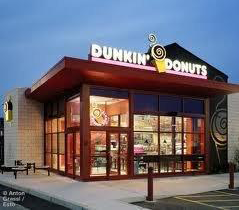 Dunkin Donuts, MA: Dunkin Donuts is a franchise based company so individual owners make their own decisions for accounting software needed. Several owners had many stores, and received their vendor bills over the internet and hand entered them. Further, sales data from each cash register needed to be updated, and the cash reconciled into QuickBooks. We wrote an import for automatically reading each cash register, updating the journal entries into QuickBooks (by Class), and receiving the vendor bills into QuickBooks.
Dunkin Donuts, MA: Dunkin Donuts is a franchise based company so individual owners make their own decisions for accounting software needed. Several owners had many stores, and received their vendor bills over the internet and hand entered them. Further, sales data from each cash register needed to be updated, and the cash reconciled into QuickBooks. We wrote an import for automatically reading each cash register, updating the journal entries into QuickBooks (by Class), and receiving the vendor bills into QuickBooks.
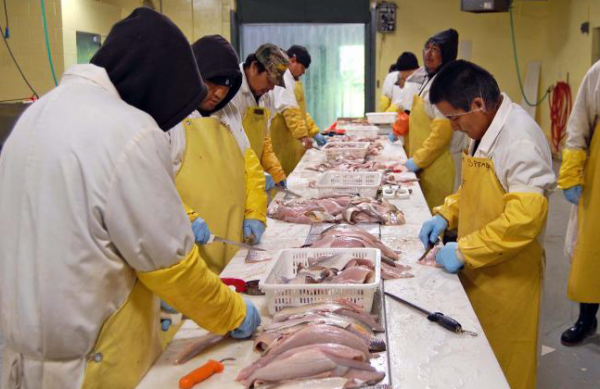 Frozen Seafood Companies, Boston, MA:
Frozen Seafood Companies, Boston, MA:
This company purchased raw fish each day, processed the fish into “fish boxes” that could be frozen and sold by retail stores like Wal-Mart. EDI orders were received. Lot numbers needed to be tracked. The actual purchasing, costing, and labor for each “ton of fish” was stored, and waste was calculated as fisherman are paid by what’s good.
Fishbowl Inventory was selected to solve the item number and lot number system. The production costing is done through an elaborate custom program that is now proprietary to this company due to its formulas. The company no longer uses Excel to track lots and pricing to fisherman and customers.
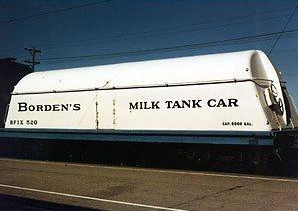 Milk, Orange Juice, and Corn Sugar Broker, Boston, MA:
Milk, Orange Juice, and Corn Sugar Broker, Boston, MA:
This Company would purchase futures in many types of consumable commodities. They would sell those goods in lots to their customers. Storing the goods they purchased in remote warehouses was expensive, it was important to quickly find the prices of each lot, and quote customers who sometimes purchased in a matter of minutes the goods they owned.
As prices would rise, the broker would take risk and pay a warehouse fee. Other times he would be forced to sell items at or below his costs. Keeping track of what customers paid, what lots and costs he had was critical to staying in business. Further, commission reports were generated, and EDI shipment information was sent to each warehouse daily for scheduling on railways. By using QuickBooks we were able to track all this information, and wrote many special reports and screen lookups over the web to combine information inside QuickBooks for salespeople, and then accounting.
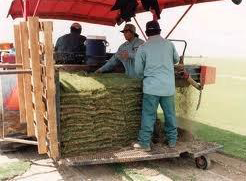 Turf Farms, New England:
Turf Farms, New England:
This customer owned several remote turf farms for grass sold to landscapers and home builders. The grass was selected by each customer in the field, and entered into QuickBooks using an iPad and remote internet connection directly into QuickBooks. Pricing and Receivable information was reviewed by each farmer before making a sale.
The information was then updated into a main server for QuickBooks, which accumulated the sales and financial statements. The customer had transferred from SBT accounting and used QuickBooks payroll to replace ADP so accounting would be easier.
 Sand and Gravel, Boston, MA:
Sand and Gravel, Boston, MA:
The customer was using legacy software for many decades. We wrote a program that read the scale, and allowed each remote scale house to enter the ticket information such as truck no, customer, item, gross weight, tare weight, and price. A signature pad is to be added later to store each image onto each ticket. The tickets are accumulated weekly, and put onto an invoice each Monday. Tickets are received each night at 5PM including weekends. Lookups were created to find each ticket, signatures, and individual trucks upon request. By using QuickBooks, this company saved thousands in IT software costs from their previous system.
 Entertainment Business, Boston, MA:
Entertainment Business, Boston, MA:
This Company had a legacy IBM Computer system with a custom written software adapted from a supermarket accounting system. The customer only had one checkbook, and needed balance sheets by class. Each class represented a profit center for real estate and location purposes, but with only one checkbook, the information needed to be entered tracking inventory and payable information.
Through a special report, and a program that distributed the journal entries automatically by class, the customer was able to use QuickBooks to replace their legacy system.


